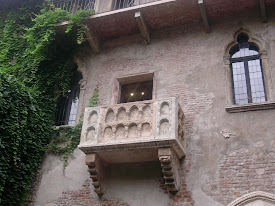Former DJ now one of Italian TV’s most familiar faces
The entertainment and game show presenter Amedeo Sebastiani - known professionally as Amadeus - was born on this day in 1962 in Ravenna..jpg)
Amadeus has become one of the most
recognisable faces on Italian TV
In a small screen career spanning almost 35 years, Amadeus has fronted several major shows for both national broadcaster RAI and for the channels of the privately-owned Mediaset network.
He was the original face of the hit game show L'eredità - The Inheritance - which has been a fixture on Rai Uno since 2002 - and more recently he has become the regular host of Rai Uno’s annual New Year’s Eve variety show L’anno che verrà - The Coming Year.
Amadeus has also presented two of Italy’s biggest song contests, Festivalbar, and the Sanremo Music Festival, of which he is the current host and artistic director.
Sebastiani’s parents were both Sicilian, his father Corrado an accomplished horseman who taught his son to ride and passed on a passion for horses.
After doing his national service at a base in San Giorgio a Cremano near Naples, he worked in radio for the first time in 1979 for a small station in Verona, where he had moved with his family at the age of seven.
 |
| Amadeus (right) in his early days as a radio presenter and DJ in Verona, where he grew up |
He made his television debut in 1988 for Mediaset, participating in a music programme on the Mediaset channel Italia 1 alongside his friend, the rapper Jovanotti, subsequently hosting Deejay Television and Deejay Beach on Italia 1.
This led to his involvement in the song contest Festivalbar, which was broadcast every summer from 1964 until 2007, taking place in the open air in the main square of many cities around Italy, culminating in a final at The Arena in Verona.
After hosting a talent show on Canale 5, another Mediaset channel, he made his first venture into the world of game shows by taking over from his friend Gerry Scotti as the host of Il Quizzone, but it was after he moved to Rai Uno in 1999 that he began to be associated with the quiz show genre.
L'eredità, a game show in which competitors take on seven different challenges conceived by Amadeus himself in conjunction with Stefano Santucci, launched in 2002. It was hugely successful, regularly attracting audiences of more than eight million, giving Rai dominance of the early evening schedules and turning Amadeus into a star.
 |
| Amadeus is now the regular host of the New Year's Eve show L’anno che verrà |
Yet after only three years, in 2009, he rejoined RAI, where he remains today. He had a long run hosting a variety show entitled Mezzogiorno in Famiglia before taking over as the host of L’anno che verrà in 2015 and of the popular Soliti ignoti - an Italian version of the American show Identity - since 2017.
Amadeus has been the main presenter and artistic director of the Sanremo Music Festival since 2020 and will remain so until at least 2024.
Married twice, he has a daughter, Alice, and a son, José Alberto, who is named after José Mourinho, the Portuguese football coach who led Inter-Milan, of whom Amadeus is a lifelong fan, to the Serie A title twice and won the Champions League during his two seasons at the club.
Travel tip:
'Juliet's Balcony' attracts thousands of
visitors to Verona every year
Verona, where Amadeus grew up, is the third largest city in the northeast of Italy, with a population across its whole urban area of more than 700,000. Among its wealth of tourist attractions is the Roman amphitheatre known as L’Arena di Verona, which dates back to AD30. With a seating capacity of 22,000, it is best known now as a venue for large-scale open air opera performances, although it also stages pop concerts. Verona was chosen as the setting for three plays by William Shakespeare – Romeo and Juliet, The Two Gentlemen of Verona and The Taming of the Shrew - although it is unknown whether the English playwright ever actually set foot in the city. Each year, thousands of tourists visit a 13th century house in Verona where Juliet is said to have lived, even though there is no evidence that Juliet and Romeo actually existed and the balcony said to have inspired Shakespeare’s imagination was not added until the early 20th century.
Travel tip: .jpg)
The harbour at the Liguria seaside resort
of Sanremo, home of the Sanremo Festival
The resort of Sanremo in Liguria, which hosts the eponymous song festival, is a seaside resort on what is known as the Italian Riviera. It expanded rapidly in the mid-18th century, when the phenomenon of tourism began to take hold, albeit primarily among the wealthy. Several grand hotels were established and the Emperor Nicholas II of Russia was among the European royals who took holidays there. The Swedish chemist Alfred Nobel was so taken with the elegance of the town after his holiday visits that he made it his permanent home. Known as the City of Flowers, it is characterised by its Stile Liberty architecture (the Italian variant of Art Nouveau), of which the Casinò di Sanremo in Corso degli Inglesi is a beautiful example.
Also on this day:
1850: The birth of Luca Cadorna - military general
1974: The birth of Rita Atria - witness of justice
2006: The death of footballer Giacinto Facchetti
The Feast Day of Saint Rosalia










